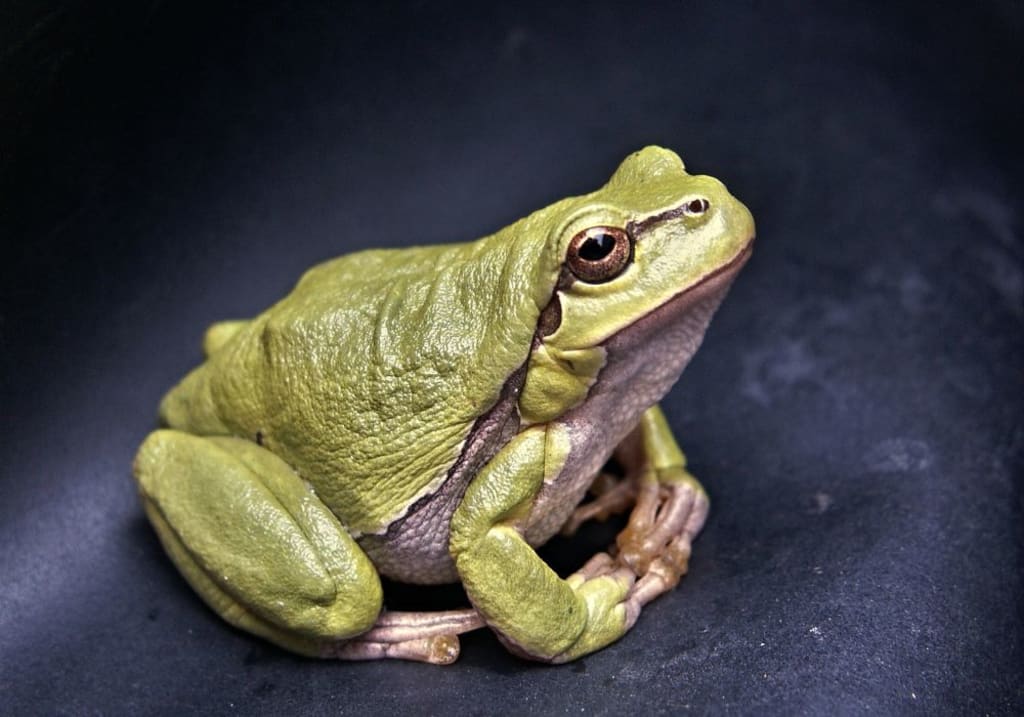The Dos and Don'ts of Handling Your Pet Frog
The Amazing Guide

Frogs may be small, but they require special care when it comes to handling. Improper handling can stress out your frog and even make them sick. In this comprehensive guide, we'll cover the essential dos and don'ts of handling pet frogs to keep your amphibian friend healthy and happy.
Why Proper Frog Handling Matters
Frogs have delicate skin that absorbs chemicals and moisture from their environment. The oils and bacteria on human skin can be harmful to frogs if transferred through handling. Frogs also have very sensitive respiratory systems that can be impacted by stress.
Mishandling a frog can lead to:
- Skin irritation and infections
- Respiratory distress
- Broken bones or limbs
- Increased stress levels
- Refusal to eat
To avoid these issues, it's crucial to handle your pet frog as little as possible and follow proper handling techniques when necessary. Let's dive into the dos and don'ts.
The Dos of Frog Handling
1. Wash Your Hands First
Before handling your frog, always wash your hands thoroughly with a mild, unscented soap. Rinse off all traces of soap and dry your hands completely. The key is to remove any oils, lotions, or chemicals that could be harmful to your frog's sensitive skin.
2. Keep Hands Wet
Frogs absorb moisture through their skin. To avoid drying out their skin, always handle them with wet hands. Gently mist your hands with dechlorinated water before picking up your frog.
3. Support the Whole Body
When picking up a frog, place one hand under their chest and the other under their hind legs. Support their entire body to avoid putting pressure on any one area. Never grab a frog by their legs or try to pick them up by their head.
4. Keep Handling Brief
Limit handling to only what is absolutely necessary, such as when cleaning their habitat or moving them to a new enclosure. The less you handle your frog, the less stress you'll cause them. Always keep handling sessions brief, under 1-2 minutes if possible.
5. Wash Hands After
After handling your frog, rewash your hands thoroughly. This removes any bacteria or pathogens that may have transferred from your frog's skin to your hands. Washing your hands also prevents spreading any illnesses from you to your frog.
The Don'ts of Frog Handling
1. Don't Handle Sick Frogs
If your frog appears sick or injured, avoid handling them and contact your exotic vet immediately. Handling a sick frog can worsen their condition and spread illness to other frogs in your home.
2. Don't Handle Wild Caught Frogs
Never handle wild caught frogs, as they are more prone to stress and disease. Stick to captive bred frogs that have been raised in captivity.
3. Don't Handle Frogs for Fun
Avoid handling your frog for entertainment or to show them off. Frogs are not toys and should only be handled when necessary. Frequent handling can lead to chronic stress.
4. Don't Handle Frogs with Gloves
While latex gloves may seem like a good idea to avoid transferring oils, they can actually be worse than bare hands. Gloves may have chemicals on the surface that can be absorbed through a frog's skin. Stick to wet, clean hands when handling.
5. Don't Handle Frogs After Using Chemicals
Avoid handling your frog after using cleaning products, pesticides, or other chemicals in their habitat. Always allow proper drying and ventilation time before handling to prevent chemical exposure.
Proper Frog Handling Techniques
Now that you know the dos and don'ts, let's review the proper techniques for safely picking up and holding your pet frog.
Picking Up Your Frog
- Wash and wet your hands as described above.
- Approach your frog slowly and gently. Avoid making sudden movements that may startle them.
- Place one hand under their chest, supporting their front legs. Place your other hand under their hind legs and lower back, cupping their entire body.
- Lift your frog straight up, keeping them close to the ground in case they jump. Never dangle a frog by their legs.
- Keep your frog close to your body to minimize stress. Avoid holding them up for others to see.
Holding Your Frog
- Keep your frog close to the ground or a soft surface in case they jump out of your hands.
- Support their entire body at all times. Never let their legs dangle.
- Keep handling sessions brief, under 1-2 minutes if possible. Return your frog to their habitat as soon as you're done.
- Never place a frog on an unfit surface like your clothing, furniture, or the floor. Always keep them over their habitat.
- Avoid squeezing or restraining your frog. Let them move around gently in your hands as needed.
Handling Specific Frog Species
While the general handling guidelines apply to most pet frogs, some species have special considerations:
Dart Frogs
Dart frogs secrete toxins through their skin as a defense mechanism. Avoid handling them if possible, as the toxins can be absorbed through your skin. If handling is necessary, wear gloves and wash your hands thoroughly afterwards.
African Dwarf Frogs
African dwarf frogs are fully aquatic and should never be removed from water. If you need to move them, gently scoop them up in a cup of water from their habitat. Support their body and return them to the water as soon as possible.
Pacman Frogs
Pacman frogs have large mouths and may try to bite when handled. Approach them slowly and avoid putting your fingers near their mouth. Support their body with both hands when picking them up.
- Frog Handling Dos and Don'ts Recap
- To summarize, here are the key dos and don'ts of handling pet frogs:
Do:
- Wash and wet your hands before and after handling
- Support the frog's entire body
- Keep handling brief and infrequent
- Handle only when necessary
Don't:
- Handle sick, injured, or wild caught frogs
- Handle for entertainment or to show off
- Use gloves or handle after using chemicals
- Squeeze, restrain, or dangle the frog
- Place the frog on unfit surfaces
By following these guidelines, you can minimize stress and keep your pet frog healthy. Remember, frogs are delicate creatures that require gentle care. With proper handling techniques, you can keep your amphibian friend happy and thriving.
About the Creator
Hasan
Welcome...
In this site of mine you can learn amazing things and many information that you don't know so please subscribe to my site.
Enjoyed the story? Support the Creator.
Subscribe for free to receive all their stories in your feed. You could also pledge your support or give them a one-off tip, letting them know you appreciate their work.






Comments
There are no comments for this story
Be the first to respond and start the conversation.